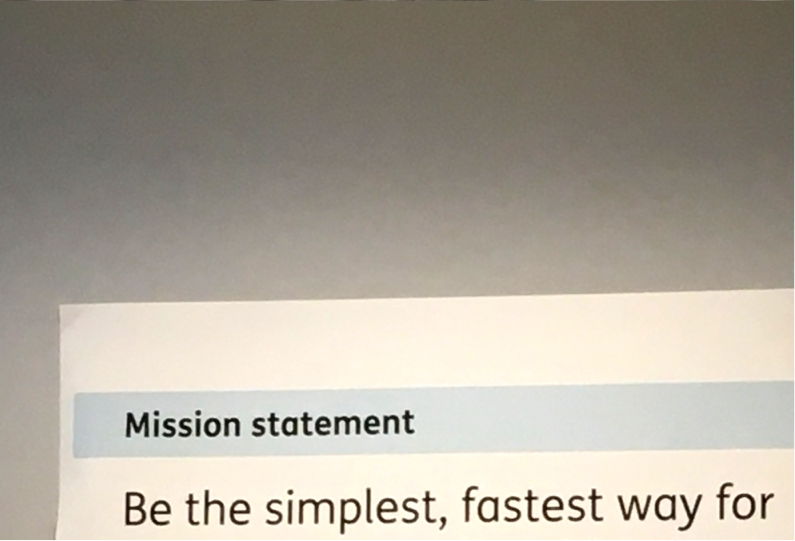Mission statements: better, faster, super-duper

I’ve been doing some more thinking about vision and mission statements, or setting long term goals for products and services.
When we’re thinking about the products and services we work on in government, many of our long term goals revert back to “Be the simplest, fastest way [to do a thing].”
What we mean is we want to make something that works well for people that’s better than the alternatives.
This might mean making a transaction available 24/7 through a digital service, so that it’s more accessible by default. But often we mean the digital channel has to be better so people choose to use it. We then have a service that’s more efficient to run, scale and keep secure that should meet most user needs, with the large majority of people self serving.
I always think this is short sighted as it fails to recognise the real opportunity.
When you make something more efficient in any way it’s an opportunity to refocus on the outcomes you’re working to deliver.
This should never be just about saving time or money. Delivering outcomes is about learning to focus the time and money your organisation has in the most efficient way to deliver value.
It’s okay to make simplest, or fastest our product goals. But it’s important that we’re explicit about what we mean and how we measure the real value of making this happen.
What is it we intend to happen as a result of delivering a service, product, or tool that’s the simplest, fastest way for someone to do something?
An example
I read (and shared) a great post by Paul Taylor about automation over the weekend.
Many of our product teams have to define goals for internal systems, or the design of front line staff processes. Automation is something we think about because it allows us to create space for people to spend their time on other more important things.
As Paul explains:
“Successful automation is about freeing people up to tackle the problems they don’t normally get the time to solve.”
As an example: for a work coach in a job centre, this means spending less time inputting data into an IT system so they can spend more time giving people the support they need to look for work.
In any organisation, if most people can self serve because services are designed to be simple and fast, this lets the focus shift to people who need more time and support or have more challenging situations.
If we apply this to “Be the simplest, fastest way [to do a thing in our admin system].”
…then the real measure is how much time we’ve saved to spend doing the things that really matter. That’s the outcome, doing more of something else, or the most important thing we need to do. Making the IT system work more efficiently is one of the ways we make this happen.
To recap, efficient IT systems matter because they free up time that can be reinvested with people. Alternatively, they free up costs to invest in other products and services that meet user needs elsewhere.
What really matters?
Equality isn’t about making things work exactly the same for everyone. It’s about having the flexibility to get everyone to the same outcome.
This means being adaptable enough to turn “simpler, faster” services into value where its most needed.
This value isn’t the efficiency. It’s what we do with it, or where we reinvest the time or money saved.
It’s how we meet user needs. Understanding the real outcomes we’re working towards, and then focusing on the people who need the most support to get there. In doing this we make sure that there’s a good enough solution in place that’s simple and accessible enough to work for everyone else.
If your product exists to solve a problem then what is it that really matters? Try to think beyond just making things simple, usable, or more convenient to access.
To get there you first have get down into the detail of framing the problem. Making sure that you can measure any long term goals, thinking about metrics that matter (KPIs).
Further reading
You can read more about the importance of mission statements in my earlier post. Melanie has written a great practical blog post: helping teams define their focus as a follow up for DWP Digital.
This is my blog where I’ve been writing for 20 years. You can follow all of my posts by subscribing to this RSS feed. You can also find me on Bluesky and LinkedIn.